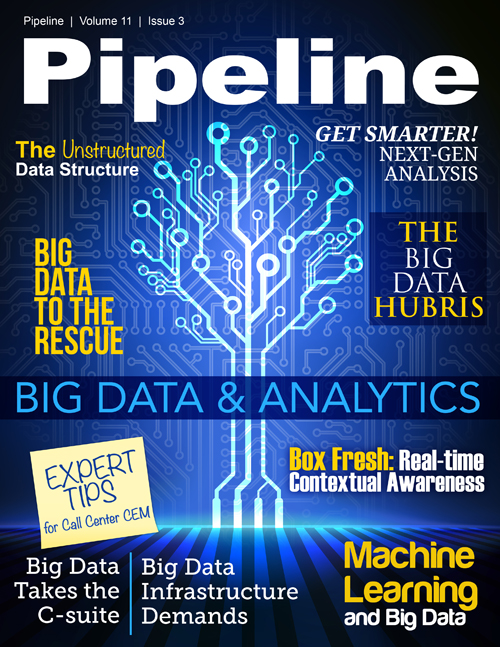The Big Data Hubris
Myth 2: Big Data all needs to be "cleansed"
Many telecom operators are cleansing data as if its operational data (as if its xDRs)—as if it is for revenue assurance or billing (which is money on the table). This whole strategy is off. There are use cases that require “clean” data, but CEM (customer experience management), churn analysis, upsell/cross-sell—require a completely different approach. Spending time and money cleaning data for most uses cases is like using a hammer to nail in a screw.
Myth 3: More data always improves decision making
No matter how much data is available, data alone does not preempt traditional business sense. Asking the right questions and defining outcomes is crucial. What problem is on the table, and how will a business decide when a problem is solved? Which data sources have been aggregated and how is that information being presented? These are important questions to ask and understand the answer to in order to make, more specifically influence, the decisions that count.
Actionable steps
Pipeline recently had a chance to speak with Dr. Lorien Pratt, chief scientist at Quantellia, and a expert in machine learning and artificial intelligence. She offered the following actionable steps with regard to the application of big data in telecommunications:
- Put the data aside. Get yourself into a room where you’re not talking about the data—your brain will explode if you’re trying to consider every possible data set. In fact, you might even chose not to invite the data guys to the room!
- Figure out what you’re trying to achieve. What are your outcomes? Are you trying to increase net profit in a specific customer set or geographic region? How would you measure that? Does the whole organization agree on these performance and outcome metrics? Often times, there are disconnects.
- Revisit outcomes regularly. Returning to the table to level set on a monthly basis is crucial, because outcomes drift, and they need to be measurable. The world changes.
- Once you figured out your outcomes, brainstorm that. Identifying the decision levers—what are the things that could change—in a business case is equally important.
Are you ready for big data?
It is important to remember that big data is a tool, and a big data analytics solution is a toolset, not a crystal ball. Oftentimes basic business questions can be answered quickly and effectively without deep analysis of ten billion records and another five billion tweets and Facebook posts. Statistical analysis did not become obsolete when the cost of data storage plummeted. A well-designed analysis of a smaller data set with well-defined understanding of decision levers and clear, measurable outcomes might be all that is needed.
No one wants to end up with a tool that functions like the Google Flu Tracker, though. In order to avoid epic fails in big data, CSPs should start with organizational alignment around measurable goals, and then select the appropriate tool or data sets depending on the use case.


















